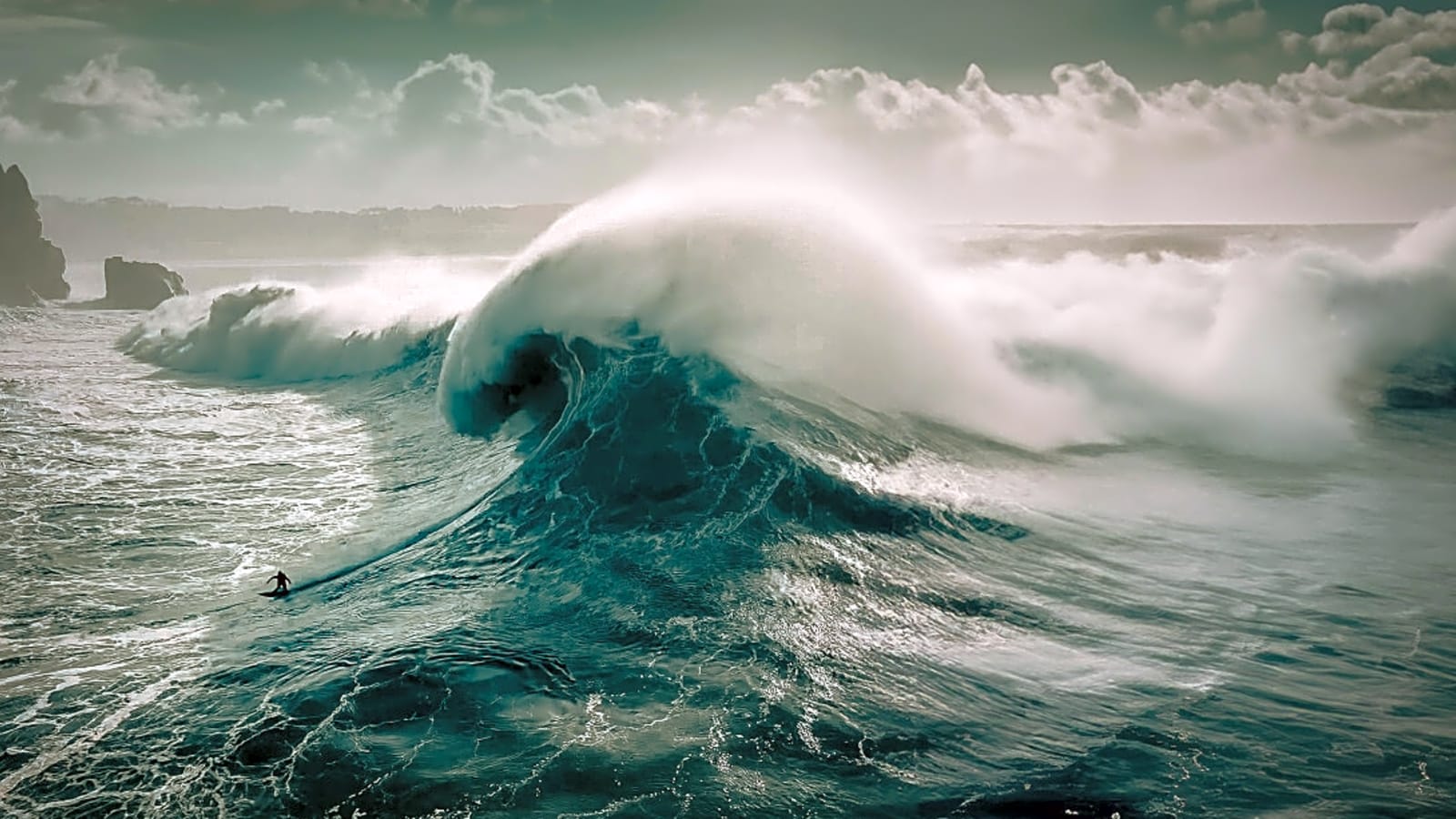
When looking at a surf forecast, there are several key factors to take into consideration, including swell direction, swell height, tide times, wind speed and wind direction. If you can understand these basic forecasting elements, then you can, to a large extent, understand what's going on at any surf spot.
As with most things with surfing, however, these factors are just the tip of the iceberg.
Many additional factors go into wave formation and what makes a surfable wave. Bathymetry, refraction, ENSO cycle, jet stream, high and low pressure, fetch, a storm's distance from shore, water temperature, propagation, beach angles—the list is long and complex.
But for the purposes of this piece, let's focus on one of the most basic components of a surf forecast: wind direction. This is an integral piece of information for every surf zone across the globe.
Offshore vs. Onshore Wind
With most surf spots, you're looking for offshore wind. This is when the wind blows from the shore out to sea. Onshore is the reverse, when the wind blows from the sea onto land.
Offshore wind is preferred because it blows the wave face into a clean and surfable state. Onshore wind, again, is the opposite; it blows from behind the wave, crumbling the wave and making for shorter rides and messier waves.
To know if the wind is offshore, you need to understand the direction your beach faces. Let's say your beach faces due west. Then the offshore wind would be from the opposite: an easterly wind. The wind direction is named for the point on the compass from which the wind is blowing. So, for example, an east wind is indicated by a west-pointing arrow, indicating the wind is blowing from the east. That east wind would blow offshore at a west-facing beach. A northerly wind would blow offshore at south-facing beaches and so on.
The caveat here is that you do not want the wind to be strong. If it is, it can blow smaller waves flat or create difficult paddling conditions when trying to get into the wave. Look for a gentle or moderate wind that is puffing off the coastline.
That isn't to say onshore wind is always bad; in fact, there are plenty of opportunities to surf in onshore conditions. The surf may be a bit crumbly and junky, but the lighter the onshore wind, the better the surf will be. There are lots of surf spots that are fine in onshore wind.
What About Cross-Shore Winds?
In addition to onshore and offshore winds, there are also cross-shore winds, or side-shore winds. This is where the wind blows across the face of the wave. If your spot is protected enough from the wind, by sand dunes or other structures, cross-shore wind may not impact it as much as you think, and you'll be able to sneak a few waves in while the wind blows away.
Reading Wind on a Surf Report
Different surf forecasting platforms have different ways of presenting wind, but the premise is generally the same. The wind direction indicates where the wind is blowing from. When you click on your spot, some surf reports will tell you if it is offshore or onshore and the strength, plus a prediction of how strong the wind is and how it is expected to change.
There are a few forecasting sites that do not have this feature, and it's up to you to understand which direction your beach faces and how the wind impacts it. Once you understand this, you can then build up your own forecasting knowledge; how do big swells impact your coastline? Is there nuance to the wind (e.g., can a spot work at high tide under a cross-shore wind)? The wonderful thing about forecasting is that you have all the information at your fingertips, and then you can rely on your own local knowledge to dial it all in.
What About Wind Swell?
Wind swell is a completely different factor from wind direction. Wind swell is when wind off the coast, or sometimes localized wind patterns, churn up the sea to create short-period waves, surfable on any body of water.
Landlocked bodies of water like Lake Michigan and the Baltic Sea rely on wind swell for surfable waves. In these spots, you're waiting for the opposite of the ocean winds. If it's howling onshore, it is more likely to create surfable waves and swell. These swells are often short-lived and have a limited time period during which you can surf them.
Because the surfing opportunities tend to be more limited in these regions, the local surfing communities jump when the wind swell is just right.
How Do Wind Forecasts Work?
Every forecasting website has its own way of predicting wind. For the most part, websites use model data—i.e., the data collated by third-party entities—and run this through their own surf-specific algorithm to produce a wind forecast. Some websites have now set up their own near-shore live-weather stations, which can give a real-time representation of what the wind is doing at that surf spot.
The best way to get local winds dialed in is to go to your local spot, check your favorite forecasting apps and see which one feels most accurate and/or useful. Some have higher resolution wind charts that can get granular over wind. Others offer a broad-strokes overview. Experiment and figure out which forecast works for you.
It may also be that one forecasting product works well for one country but is completely off the radar for another. This could be due to any number of factors. It is a good habit to use a multitude of different forecast websites or apps and see which ones are the most accurate for a particular area. It may seem like a daunting task, but you can also ask locals which forecasting service they think offers the most accuracy.
More must-reads:
- Alabama QB Ty Simpson has Heisman moment in road win at No. 14 Missouri
- Two high-profile moves Yankees need to make in free agency
- The 'Team USA men's basketball coaches' quiz
Breaking News
Trending News
Customize Your Newsletter
 +
+
Get the latest news and rumors, customized to your favorite sports and teams. Emailed daily. Always free!








